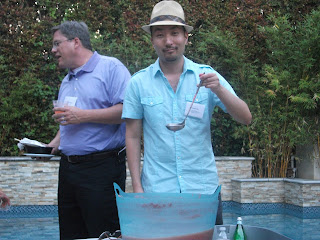This morning, we had a lecture by the Venerable Jongmae Park about the different religions in Korea. He is a Zen Buddhist bishop who teaches at Loyola Marymount, and he will be our guide at the Buddhist temple tomorrow.
Shamanism, Buddhism, Confucianism, and Christianity have been fighting it out in Korea for centuries. Currently, South Korea is 50% Christian. There are more Protestants than Catholics, but more are converting to Catholicism every year because as a traditional country, Koreans like the tradition and ceremony of the Catholic Church.
The Venerable Park also confirmed my theory of why Korea is the most Christian east Asian country. Korea suffered great losses and poverty during the 20th century so a gospel of hope appealed to them. Also, Christian missionaries helped to rebuild their country after the war, and Koreans associate western Christianity with prosperity.
This lecture was followed by a brief lecture on the role of women in Korean society. They have more equality than just 30 years ago, but traditional Confucian values are hard to overcome.
We also had a brief introduction to the idea of Hallyu, or the Korean Wave. This is the rise in populatiry of Koean Pop Culture. Look out for Girls Generation, a teenager will be dancing to them near you one day.
http://www.youtube.com/watch?v=TGbwL8kSpEk&list=ALHTd1VmZQRNowvLpZPWHE4tXx-5_bZfOR&index=1&feature=plcp
For lunch, I got to "roll my own":
Then we viewed clips of famous Korean movies. I will tell you about those later. And, we learned about a type of Korean poetry called Sijo. There is a national contest for these poems, and I am definitely making my students enter.
Finally, we toured the Korean art wing of LACMA (LA County Museum of Art), which has the distinction fo being right next door to the Lebrea Tar Pits.
Ah, the juxtaposition!





















.jpg)
